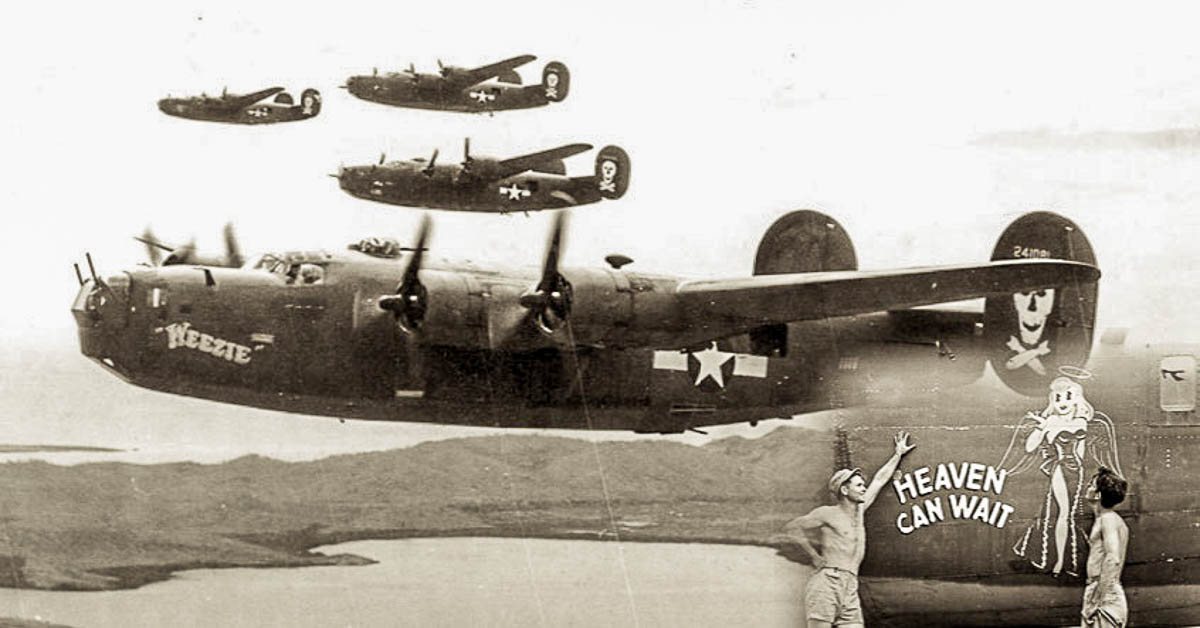
Kelly Family Shares MIA Research
On Memorial Day 2013, Scott Althaus did what he thought every family should do on Memorial Day; he began searching WWII records for his family’s war heroes and MIAs. One of the men he wanted to research was his cousin once removed, 2nd Lt. Thomas Kelly, Jr., who had been Missing In Action (MIA) since 1944.
Lt. Kelly served as a bombardier in an 11-member crew aboard a B-24 bomber called Heaven Can Wait. Their mission that day was to bomb anti-aircraft positions on Awar Point at the northwest corner of Hansa Bay. Kelly’s B-24 took fire, became engulfed in flames, and crashed into the water off Papua New Guinea. According to a 1992 letter from W. L. ‘Red’ Tonder, an eyewitness whose plane flew in formation with Heaven Can Wait, the last communication from the B-24 was a salute from co-pilot, 2nd Lt. M. J. McFadden, as the plane turned away.
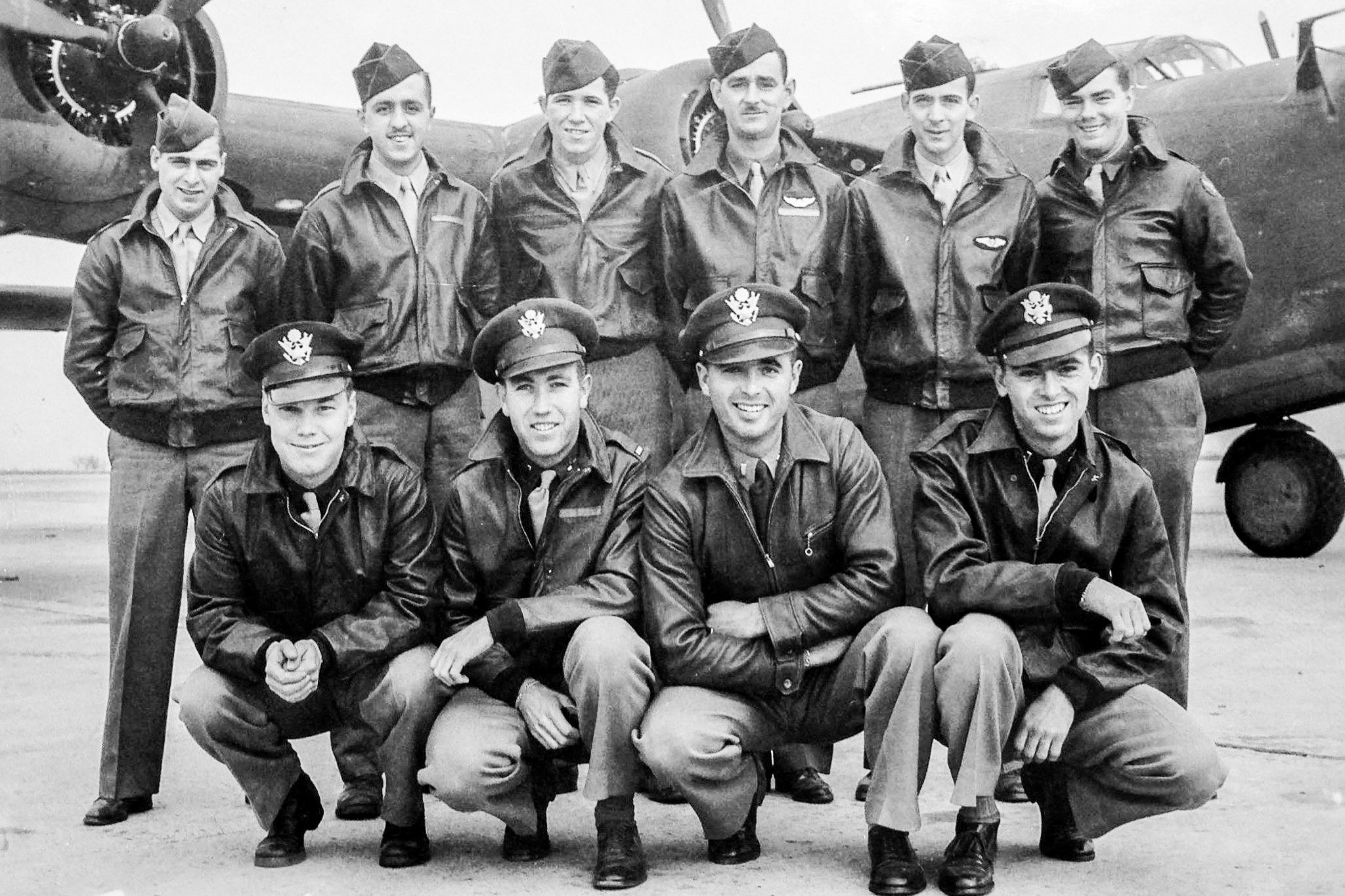
Back Row (L to R): S/Sgt Donald Burd (Radio/Gunner), T/Sgt Edward Gorvetzian (Engineer), S/Sgt Walter Graves (Waist Gunner), S/Sgt Paul Martin (Tail Gunner), S/Sgt Eugene Darrigan (Radio Operator),S/Sgt Eugene Rheinhardt) (Career Gunner). Front Row (L to R): 2nd Lt. Donald Sheppick (Navigator), 1st Lt. Herbert Tennyson (Pilot), 2nd Lt. M.J. McFadden (Co-Pilot), 2nd Lt. Thomas Kelly (Bombardier).Not pictured: S/Sgt John W. Emmer, Jr. (Photographer)
An interest in your family’s war heroes is not that unusual. It is unusual to have the interest grow into a family research project. And it is extraordinary to have the project be pivotal in helping Project Recover successfully locate the crash site of “Heaven Can Wait” and the final resting place of Lt. Kelly and his 10 crewmates.
MIA Research: Starting With A Name
Scott Althaus started his MIA research with very little information. He even had to ask his mother for the name of her cousin who’d been killed in action in World War II. His family knew that their relative, Tom Kelly, was a bombardier and that his plane went down during a mission against a Japanese coastal base somewhere over Papua, New Guinea in 1944. That was all they were told, and it was all they knew.
As he dug through websites with WWII records and information, Althaus discovered information which led to more information. In a matter of days, he was communicating with others about their lost relative. Before long, he was sending emails out to about 20 family members about this project.
We were spread across several states and rarely had much to say to one another before, but each new discovery became an opportunity for us to connect and learn more about our shared history. (Scott Althaus, “Lost But Not Forgotten: Why This Memorial Day Is Different)
The next year, the family held its first-ever family reunion celebrating not only what they had learned, but how the search had brought them closer together. Like Heaven Can Wait, the Kelly family had a crew of 11, each doing their part to solve the puzzle. This article follows the footsteps of Scott Althaus, whose vision and skill set stewarded the project.
MIA Research: Where To Start
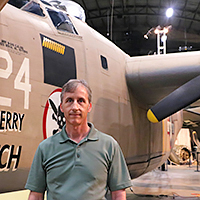
Scott Althaus beside a B-24 similar to Heaven Can Wait.
Althaus is a professor of political science and communication at the University of Illinois; a researcher by trade. Where others might hesitate, overwhelmed by MIA research or simply unaware where to access WWII records, Althaus dove in.
As with any research project, he began at the beginning. He looked for all the basic facts he could gather about the plane crash that took his cousin’s life.
- Aircraft Name
- Aircraft Serial Number
- Pilot Name
- Names of Crew Mates
- Mission
- Crash Details
Althaus hadn’t heard of the Individual Deceased Personnel File (IDPF) or Service Casualty Office when he first started his research. They are the starting point when looking for WWII records. The Defense POW / MIA Accounting Agency (DPAA) advises families beginning MIA research to contact the appropriate branch of the Service Casualty Office first. There, they can request an IDPF as well as submit DNA. The IDPF will have information about the MIA, including perhaps their mission, crash, eyewitness accounts, and even personal effects. The IDPF can be filled with information — or not. (Further Reading: How To Research Your Family’s MIA).
Getting The IDPF
Four months after starting his research, the Kelly family got the IDPF, the first of several WWII records he would get, on 2nd Lt. Thomas Kelly. It had a case summary and history of the squadron. It didn’t, however, have much of the information the family had hoped for. There were no eyewitness reports or maps. In pursuing the matter with DPAA, they discovered sometimes vital information on downed aircraft with many crew members would be filed under the pilot’s name. The pilot for Heaven Can Wait was 1st Lt. Herbert G. Tennyson.
Diane Christie, Lt. Kelly’s niece, and next-of-kin, then requested the IDPF for Tennyson. When they received it, they found the information they were hoping for: eyewitness reports and maps. He even found the missing official Missing Air Crew Report (MACR) written three days after the crash. Thereafter, the crash would be referred to as the ‘Tennyson Crash.’
In the beginning, however, Althaus didn’t know about the Service Casualty Office or the IDPF. He began his research in hot pursuit of the MACR. The report, he understood, would have vital information about the crew members, crash details, and maps. Althaus ultimately found two MACRs. One was written three days after the crash, misfiled, and then lost. The other had been written years after the crash as a replacement for the one lost earlier. The Kelly family found the misfiled paperwork as well as its replacement and solved a 72-year old clerical error in the process.
MIA Research: Websites And Search Engines
With an academic background, Althaus knew there was a broad range of information available if he looked in the right places. He would find both primary and secondary sources of WWII records. He used the following websites and search engines for MIA research. Depending on the resource, he would search by keywords around the MIA name, pilot’s name, aircraft name, aircraft number, or crash location. Then he would meticulously analyze the results for a new bit of information hidden among the old. Each new piece of information was a thread for new information.
These are the resources he found helpful.
Fold3: Althaus used this website to get access to original military records, including stories, and photos. Many of the records of from the US National archives as well as the National Archives of the U.K. This is where Althaus found the Military Air Crew Report (MACR) for Heaven Can Wait.
Google Scholar: Google Scholar is an academic database of scientific publications. Here Althaus found scientific publications that made reference to Hansa Bay. In time, he discovered there had been a research facility on Laing Island studying the coral and mussels in Hansa Bay. This lead led him to underwater topographical maps completed by those researchers. Motivated, Althaus eventually had lengthy conversations with Belgian researchers who had completed 200 dives in Hansa Bay and helped him identify wreck sites in the Bay.
Proquest Historical Newspapers: This is a newspaper digital archive. Researchers can be an eyewitness to historical events and day-to-day life decades, even centuries, ago. Althaus searched keywords like Heaven Can Wait and crew members’ names here.
LexisNexis: This is a ”database with billions of searchable documents and records from more than 60000 legal, news and business sources,’ according to its website.
Wiley Woods’s History Of 90th Bombardment Group
In a matter of days, the quest to learn more about their relative turned into finding the crash site and the final resting place of Lt. Kelly and his 10 crewmates. This proved to be a daunting task. the ocean is a big place. Without knowing key details, such as the direction of the attack, it would be impossible to narrow down the search sufficiently to locate the downed aircraft.
Early on, Althaus learned about Wiley Woods (1923-2015). Woods was a 90th Bombardment Group veteran and unit historian. He wrote and published the day-to-day history of the unit, entitled Legacy of the 90th Bombardment Group: The Jolly Rogers. Woods carefully documented and assembled all of the information, reminiscences, and documents into a 64-volume set which is housed at the University of Memphis. It was a treasure trove of WWII records.
Woods had the foresight and determination to make this information accessible. Toward that end, he had entered all of the information into a database and cross-referenced every person’s name, place, or organization name with the volume and page number of the 64-volume set he had shelved with the University of Memphis’s rare book collection.
“He had amassed 64 volumes of original records, military records, personal letters, pictures — all from the unit. One of the things he did, he made a record of every person’s name, place name, organization name, any plane name … had put them into 1980’s version of database program.” (Scott Althaus)
Research Trip To University of Memphis
With help from around the world, Althaus and his family were able to run search queries into the database. The information was so valuable, the Kelly family sent four family members to the University Memphis rare books collection. They took a photograph of everything that mentioned Tennyson (the pilot), Heaven Can Wait (the name of the plane), or Hansa Bay (the location of the crash). They spent two full days and took 800 photographs of information. Althaus spent the next two-plus years “systematically reading through the photo sequences, document by document.“
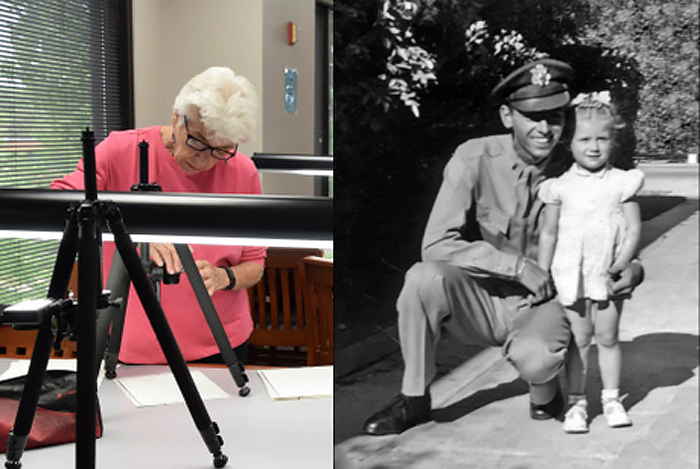
Among these WWII records, they found the most definitive information on the plane’s direction of attack from this trip. An attack in a southward direction helped the family identify three priority locations for the crash site. The aircraft was found in one of those locations.
The diary entry is relatively unremarkable on its own. It is only within the context of months and years of research, scouring hundreds, perhaps thousands of documents, maps, and images, that this entry reveals its golden nugget.
“Day before yesterday we lost a plane. It had a 321st (sic 320th) crew on it. The ship had been loaned to them. Our squadron & the 319th went over the target in their ship elements and came through O.K. The 320th & 321st went over the target in individual runs and some of their ships were badly shot up. 321st had another plane land on the runway with a tire shot out and a few holes in it. The plane of ours with their crew was hit by ack-ack right over the target. It got over Hansa Bay before it blew up. It blew up in the air. They never got rid of their bombs so there is not much likelihood that anyone got out alive.” (Diary entry from unknown member of 400th Squadron, March 13, 1944)
Hitting The Jackpot
On May 30, 2016, practically three years to the day since he began the project, Althaus sent an excited email to his family. In it, he tells his family the news.
Our Memphis archive crew brought back a jackpot document that definitively identifies the location of the “Heaven Can Wait” B-24 . . . . (excerpt from email)
Then he goes on to explain how the sentence “It got over Hansa Bay before it blew up” cracked the code for the family’s mission. His next paragraph details what he’d learned, what he’d thought, and how that evolved with each new bit of information. The family had sent him 800 puzzle pieces, and he had finally found the one that held the solution in a code he could crack.
After extensive detail, he concludes:
…so this new account definitively places “Heaven Can Wait” along the northern edge of Awar Point. (excerpt from email)
Oh, and, he wrote almost offhandedly, the Belgian diver (referenced above) said no one dives in that area of Hansa Bay…
because of dangerous currents, sharks, and lack of beautiful underwater scenery. (excerpt from email)
Organizing The Information
With so much information coming in, Althaus knew it was essential to develop a system to maintain and reflect the accuracy of the information as well as to organize the WWII records and access the information they decided was valuable. The family research team consistently recorded each detail verbatim with citation as to where the information was from.
Althaus developed a numeric system so that each detail was given a 4-digit code where the first digit indicates the type and credibility of information. Althaus and the family team developed the following structure for organizing the information.
1000 – Eyewitness Narratives for the Tennyson Crash
2000 – Official Reports and Mission Documents Regarding the Tennyson Crash
3000 – Other Contemporary Accounts of the Tennyson Crash
4000 – Relevant Contemporary Information Not Specific to Tennyson Crash
The family referenced all excerpts in Appendix A, copies of the full documents in Appendix B, and maps and photos in Appendix C.
Contacting BentProp & Project Recover
In June 2016, a family member contacted Althaus to let him know that she had reached out to BentProp independently to see if we could help with their search. Althaus had heard of BentProp through NPR and 60 minutes. He’d read Wil Hylton’s book Vanished focusing on their search for a B-24. Still, he was under the impression that BentProp’s work focused solely on the Republic of Palau and did not make contact.
“The wonderful folks are unfortunately far from Papua, New Guinea and far from where our plane is waiting to be found.” (Scott Althaus, November 2014)
Less than two weeks later, Althaus was on a Skype call with Dan O’Brien and Colin Colbourn from BentProp. BentProp is a founding member of Project Recover. For the better part of a year, Althaus gathered and organized all of their archival records into an integrated report. Nearly a year later, he’d finally loaded all the archival documents. A couple months after that, he finally completed the integrated report which he turned over to the Project Recover team.
That was the end of July. BentProp and Project Recover were heading on a three-week mission to Papua, New Guinea in October 2017. Five months later, the Kelly family received the news that their MIA Research had paid off. The B-24 Heaven Can Wait had been found in Hansa Bay submerged under 200 feet of water.
Bring Every MIA Home
As of this writing, the Kelly family’s MIA research project has been 5 years in the making. Their efforts have proved fruitful: the B-24 carrying 2nd Lt. Thomas Kelly has been found. They have been in touch with nine families of the ten other crewmates.
“The phone call from … the Project Recover crew just awoke the range of emotions in me from exhilaration to profound grieving. The exhilaration made sense, the grieving not so much.” (Scott Althaus)
The Kelly family attended a Memorial Day Service to commemorate Tom Kelly and to celebrate the incredible news that the plane has been found. It isn’t over yet though. The family’s next goal, however, is to bring Tom home for a funeral at last. The Kelly family wants to bury him beside his parents under a stone his parents’ erected awaiting his return.
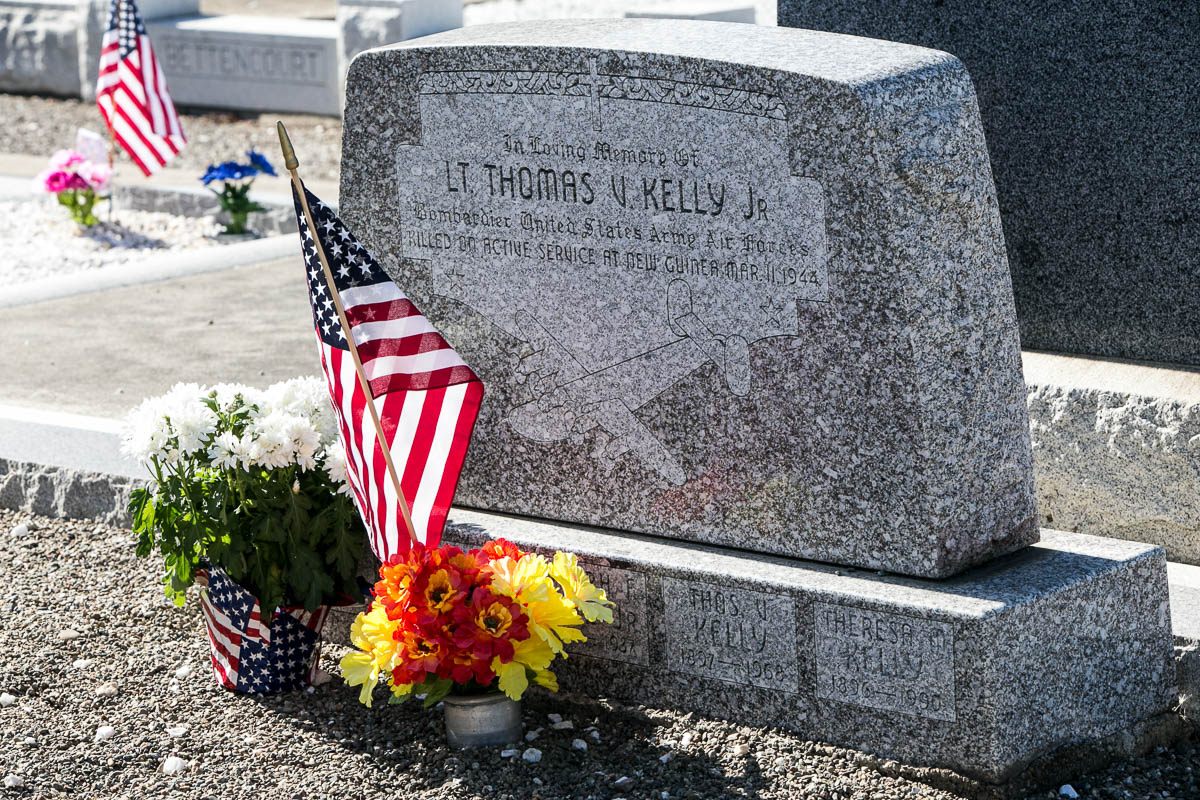
Upon locating the B-24 crash site, Project Recover turned all of its information over to the Defense POW/MIA Accounting Agency (DPAA). The DPAA is responsible for all decisions and action regarding recovery, identification, and repatriation of remains.
Throughout the MIA research, there was plenty of wait-time, but Althaus and the team didn’t wait. They emailed, followed leads, cultivated resources, culled through documents, organized their data, and wrote the final report.
While the Kelly family continues to make contact with the families of other fallen crewmates, there is finally little left to do, but wait.
The Kelly family looks forward to DPAA’s decision.
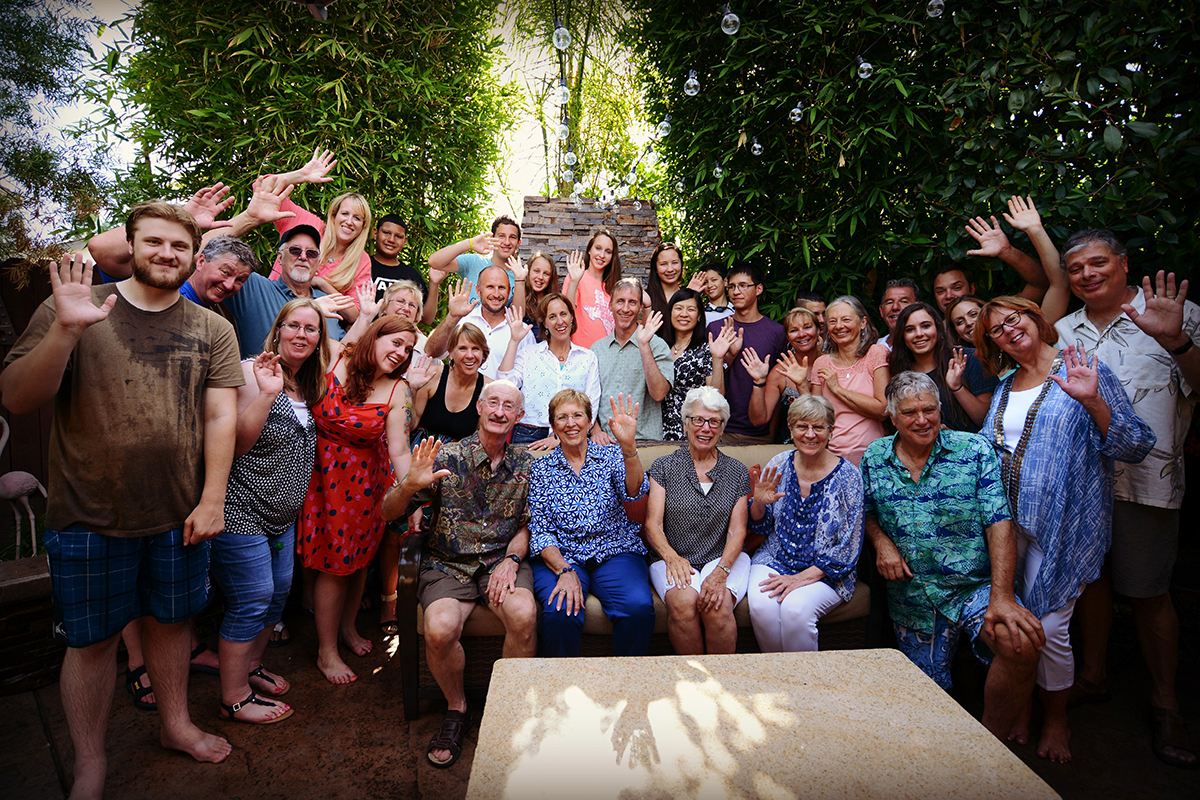
The Kelly Family and research team for “Heaven Can Wait”
Read more posts related to researching your family’s MIA:
Read more posts related to Heaven Can Wait:
- May 2018 – Project Recover Locates WWII B-24 Bomber, Heaven Can Wait
- May 2018 – The New York Times Reports Project Recover Locates B-24, Heaven Can Wait
- May 2018 – Memorial Day Service Honors Lt. Thomas Kelly, WWII Bombardier
Read posts about other WWII Aircrafts Project Recover has located:
- May 2017 – Two Missing World War II Bombers Documented by Project Recover Off Papua New Guinea
- March 2016 – Project Recover Locates WWII TBM Avenger Aircraft
- March 2015 – PMAN XVII – Project Recover Locates TBM Avenger in Palau
- March 2014 – PMAN XVI – Project Recover Locates Hellcat and Avenger in Palau



I’ve done everything I can, but no one is offering to search. I’m in contact with two more family members of the crew of 6. https://www.pacificwrecks.com/aircraft/b-25/42-64889.html
Hello Joy, someone will contact you, via email, from Project Recover soon. Hope we assist.
Hi Joy…my father, Capt Frank R Nims was the Squadron Adjutant for the 38th BG, 71st BSq serving in New Guinea initially before the allies advanced to the Phillipines, and subsequently to Okinawa. Here is a story that is similar to what you are experiencing: http://www.recordnet.com/article/20150404/NEWS/150409856/101007/A_NEWS
Thank you for this. I just now found it. Bless you.
You are welcome. Keep us in your thoughts.
So thrilled you are on a similar search for your loved ones. Our family is now in contact with living relatives of 9 of the 11 crew members, and we are having a “Heaven Can Wait” family reunion in MN this October. If we can be of any help/encouragement to your family please let me know.
hi, Thought that some of you might find this interesting..a WWII story of a member of one of my dad’s (Captain Frank R. Nims, USAAC, 71st Bomber Sqd, 38th Bomb Grp) http://www.recordnet.com/article/20150404/NEWS/150409856/101007/A_NEWS
Thanks for sharing.
Do not wait for DPAA, ( Jpac ). It is too like the equivalent bodies here in Australia, Experts at doing nothing and actually being obstructive.
Do the dive yourself. But- if that putative eyewitness account of the plane ” blowing up in the air ” is true,then the debris field may cover a mile.
Hello Elyott, we did find this B-24, https://www.projectrecover.org/nyt-reports-project-recover-locates-heaven-can-wait/ , and reported the findings to DPAA. They are now organizing the MIA recovery operation, https://www.navsea.navy.mil/Media/Images/igphoto/2002225049/ .
Thanks for the interest.
My uncle, 1st Lt. Teddy Dudziak, and his B-24 9 man crew are MIA/KIA in WWII crashing in the North Sea on November 18, 1943 after their second of two successful bombing runs on the heavy water plant in Norway. They were part of the 392nd BG out of Wendling, England. I have done considerable research and am confident that the “The Shark” AC 42-7486 can be found. Information that I have has come from Internet searches including the website for the 392nd BG (b24.net), German kill reports, Norweigan resistance reports, a fishing map of the North Sea which indicates “wrecks”, articles of aircraft that have been recovered in the North Sea.
Can you help in locating “The Shark”?
Thanks, Ted Dudziak
https://www.b24.net/MM111843.htm#m01503
https://www.b24.net/18November1943.htm
Hello, please refer to these links and get in touch with us at media@ProjectRecover.org
https://www.projectrecover.org/research-your-familys-mia/
https://www.projectrecover.org/family-shares-mia-research/
Thank you for sharing the information and recovery of “Heaven Can Wait”. As additional history my Uncle Tom Schoonen flew as a gunner on Heaven Can Wait. He flew 32 missions from England over Germany and was awarded the Distinguished Flying Cross. Heaven Can Wait was a memorable B-24. Could this be the same plane?
Hello Lori, two different B-24s. There were a few aircraft named “Heaven Can Wait” during World War II.
Thanks for the info on your Uncle.
Blue Skies.
Hi:my sister jut contacted me saying she was watching a show on t.`v about the misssing plane “Heaven can wait” Oh My God!!!that was our granpas plane!! The plane went down 2mts before my mama was born!! Mama told us he was home on his last mission but decided to rejoin the crew for what he said was his last mission then hed retire his wings he promised Grandma he’d be home for the birth of his olny child. Then Grandma received the tragic news!! Through out my moms life she wished theyd find the plane. she searched and searched but it never happen she finally said”guess I’ll have to meet him in heaven. Well she passed in 2011,with her heart broken. Mama!! Mama!!! they found the plane!! THEY FOUND the plane!!! Im shouting to the sky as I cry today…June7th 2020 God Bless The HEAVEN CAN WAIT CREW and my GRANDPA!!!
Thank you for contacting Project Recover. On behalf of all Project Recover members, we express our sympathies and gratitude as Americans for the ongoing loss of your GrandPa. We gratefully acknowledge his sacrifice in defense of our country, as well as the consequent sacrifices made by you and your family to this day.
If you would, please send us any information you may have on your Granpa.
You can expect contact by our historian, Colin, in the near future to the email you provided.
We are a small organization with resources that limit the number of our active searches for Americans Missing in Action. However, we strive to track all MIA losses and continually reevaluate the available information on each case to determine which cases we pursue in the field.
We have two articles on our website that include steps you can take to learn what is known about your family’s missing relative as well as provide your own information to the Defense POW/MIA Accounting Agency (DPAA).
● How To Research Your Family’s MIA includes the first three steps you can take to get started. It includes DPAA resources, family meetings, and casualty office phone numbers.
○ Click here: https://www.projectrecover.org/research-your-familys-mia/
● Finding Heaven Can Wait; Kelly Family Shares MIA Research – The Kelly Family Shares Research reveals the steps the Kelly Family Research team took to research the possible location of the downed B-24, Heaven Can Wait. After five years of research, they turned their findings over to Project Recover which located the B-24 in October 2017.
○ Click here: https://www.projectrecover.org/family-shares-mia-research/
You may also consider:
● Searching the online cemetery database http://www.abmc.gov/
● Searching for an association related to his unit that may have after-action or monthly reports already posted online.
● Searching the records of the National Archives and Records Administration (NARA) in College Park, Maryland or the Air Force Historical Research Agency in Montgomery, Alabama, for such things as after-action reports and unit histories. Other family members around the country may be able to help with this project if they live in those areas.
These steps may not provide all you would like to know, but they may start you on the path of at least a better understanding. If we can help answer questions along the way, let us know.
Respectfully,
dan